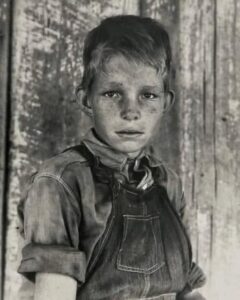In 1937, a twelve-year-old boy, the son of a cotton sharecropper near Cleveland, Mississippi, worked tirelessly alongside his family in the fields. Living in the midst of the Great Depression, his daily life was defined by long hours in the harsh sun, helping to harvest cotton in an era when economic hardship and racial inequality were prevalent in the South. Despite his youth, the boy’s contributions were essential to the survival of his family, as sharecropping often meant the difference between having enough to eat and going hungry.
The life of a sharecropper’s child was one of hardship, shaped by poverty and the weight of responsibility. In exchange for using the land to grow cotton, families like his were bound to work it year after year, with little hope of ever owning the land they cultivated. The young boy’s involvement in the labor force at such an early age reflected the systemic issues that kept sharecroppers in a cycle of debt and exploitation. His youth did not shield him from the demands of hard work, as the economic survival of his family depended on his participation.
 This image of a twelve-year-old boy, captured during a period of intense struggle for both black and white families in the South, serves as a testament to the resilience and determination of children forced to grow up too quickly. The photograph is a poignant reminder of the harsh realities of life for sharecropping families, and the sacrifices made by children like this boy who, despite their tender age, shouldered burdens far beyond their years
This image of a twelve-year-old boy, captured during a period of intense struggle for both black and white families in the South, serves as a testament to the resilience and determination of children forced to grow up too quickly. The photograph is a poignant reminder of the harsh realities of life for sharecropping families, and the sacrifices made by children like this boy who, despite their tender age, shouldered burdens far beyond their years
Leave a Reply